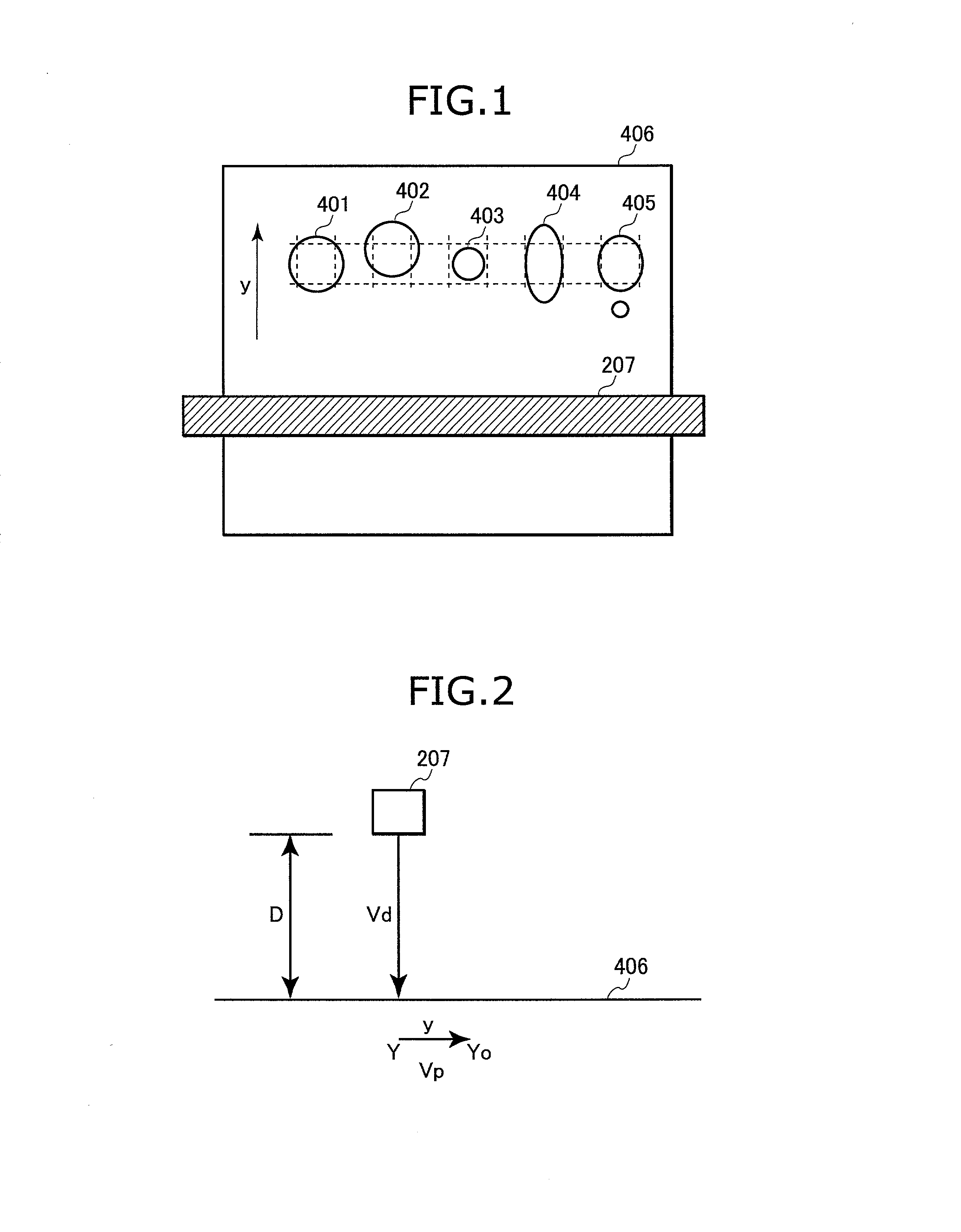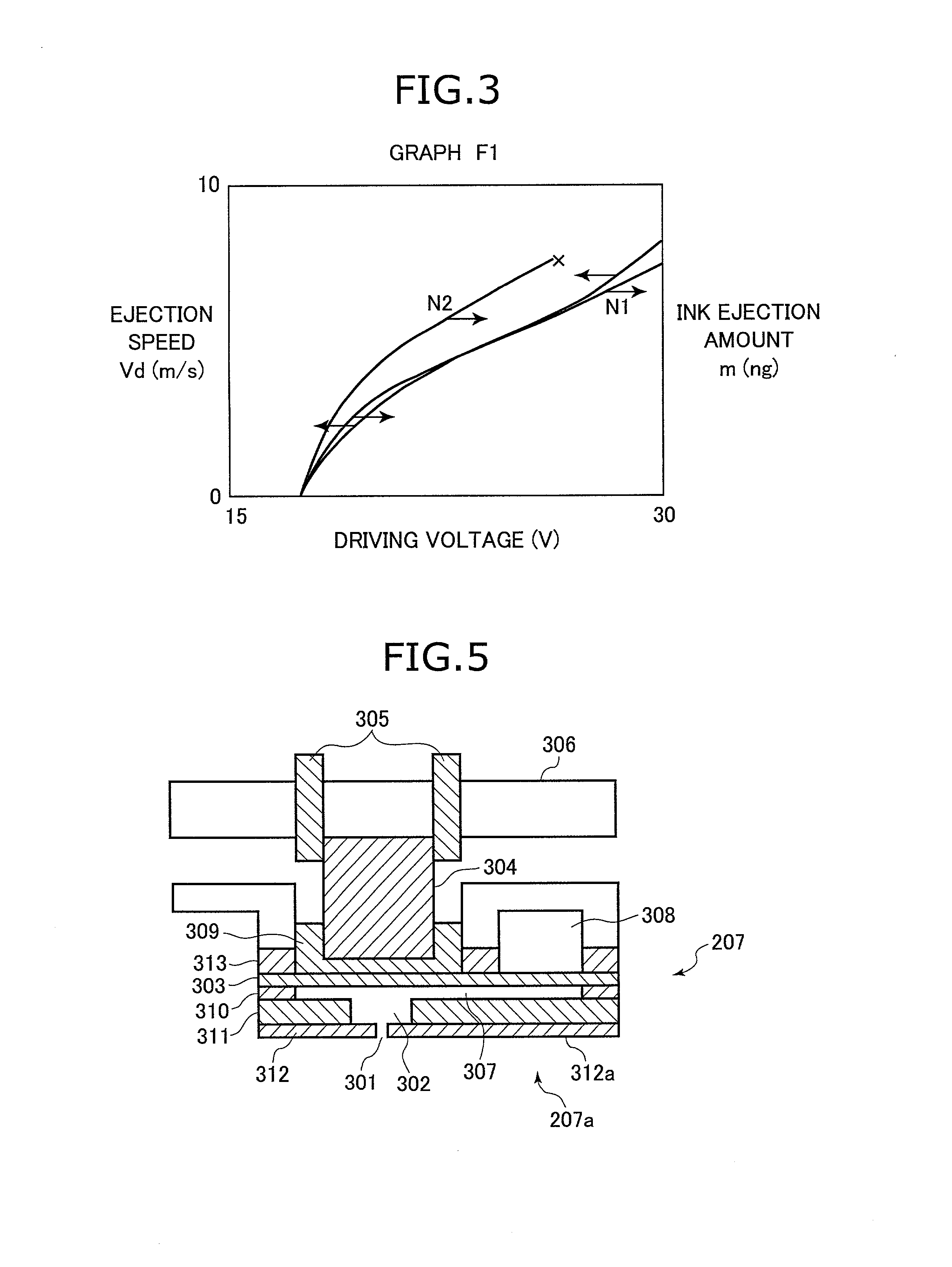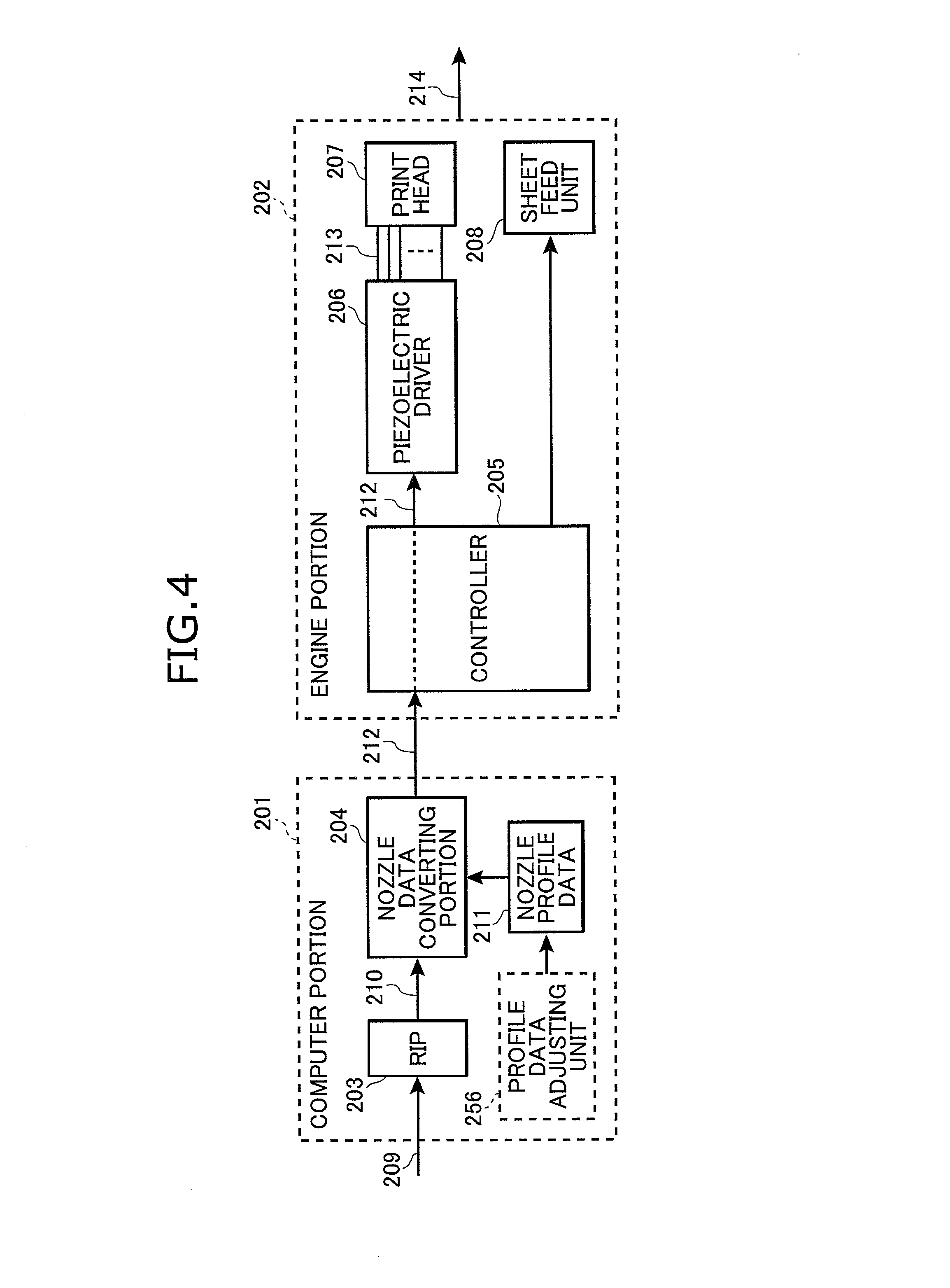Line scanning type ink jet recording device capable of finely and individually controlling ink ejection from each nozzle
a recording device and ink jet technology, applied in the direction of printing, electrical equipment, pictoral communication, etc., can solve the problems of affecting the quality of printing,
- Summary
- Abstract
- Description
- Claims
- Application Information
AI Technical Summary
Problems solved by technology
Method used
Image
Examples
first embodiment
[0047] First, an overall configuration of a printer according to the present invention will be described while referring to FIGS. 4, 5, and 8.
[0048] As shown in FIG. 4, the printer includes a computer portion 201 and an engine portion 202. The computer portion 201 includes a memory storing a printer driver software 201a and nozzle profile data 211. The printer driver software 201a includes a raster image processor (RIP) 203 and a nozzle data converting portion 204. The engine portion 202 includes a controller 205, a piezoelectric driver 206, a print head 207, and a sheet feed unit 208.
[0049] FIG. 8 shows an ink ejection surface 312a of the print head 207. The print head 207 is formed with a plurality of nozzles 207a. A center position of each nozzle 207a is expressed by the x and y coordinate axis in a unit of length (.mu.m). It should be also noted that a recording sheet is transported in the y direction in the present embodiment.
[0050] The engine portion 202 is designed for printi...
second embodiment
[0085] In order to overcome these problems, the printer of the second embodiment changes the ink ejection amount m by dividing each driving pulse into a plurality of sub-pulses in the following manner.
[0086] FIG. 12(b) shows a driving pulse divided into two sub-pulses at its center by a voltage non-application time having a time width of Tsplit (.mu.s). FIG. 12(a) shows a graph F3 showing relationships between the Tsplit and an ejection speed Vd(m / s) and between the Tsplit and an ink ejection amount m (ng). In the present example, the time width Tw of the driving pulse is set to Tn / 2, that is, 9 .mu.s. The profile data update unit 101 determines the pulse data 1 based on both the target ink ejection amount M and the graph F3 which indicates the relationship between the Tsplit and the ink ejection amount m, and updates the nozzle profile data 211, in a similar manner as in the above-described first embodiment.
[0087] An example is shown in FIG. 18. It should be noted that the time wid...
third embodiment
[0093] Next, the present invention will be described while referring to FIGS. 11, 12, 14, 15, and 16, and 11.
[0094] In the above-described first and second embodiments, it is assumed that the print head 207 ejects an ink droplet along a normal line in a direction perpendicular to the nozzle surface 312a. However, an actual ink droplet is ejected in a direction slightly angled with respect to the normal line toward the y direction and / or x direction. The angle of the ink ejection with respect to the normal line differ among the nozzles 207a. Accordingly, impact positions shift from a target impact position with respect to the y and x directions because of the slight difference between the actual ink ejection direction and the direction in which the normal line extends.
[0095] The printer of the third embodiment corrects error on impact position caused by such a direction difference for each nozzle 207a.
[0096] The printer of the third embodiment includes a print head 1207 shown in FIGS...
PUM
 Login to View More
Login to View More Abstract
Description
Claims
Application Information
 Login to View More
Login to View More - R&D
- Intellectual Property
- Life Sciences
- Materials
- Tech Scout
- Unparalleled Data Quality
- Higher Quality Content
- 60% Fewer Hallucinations
Browse by: Latest US Patents, China's latest patents, Technical Efficacy Thesaurus, Application Domain, Technology Topic, Popular Technical Reports.
© 2025 PatSnap. All rights reserved.Legal|Privacy policy|Modern Slavery Act Transparency Statement|Sitemap|About US| Contact US: help@patsnap.com



